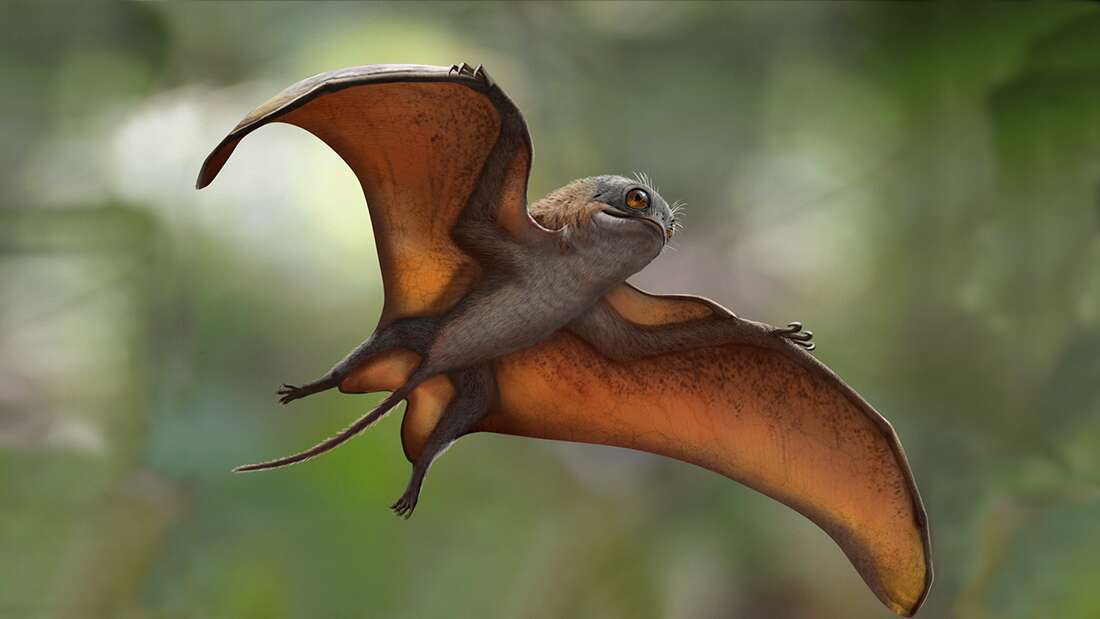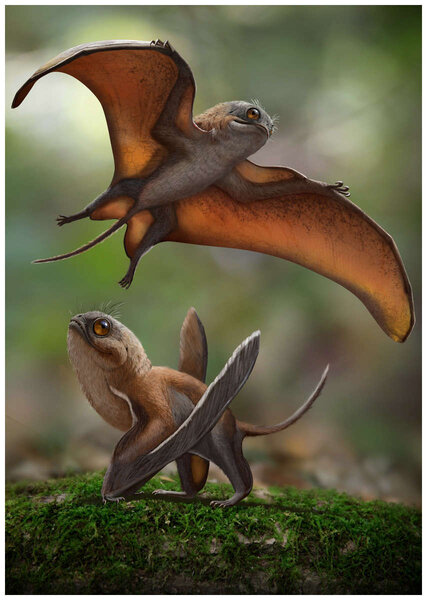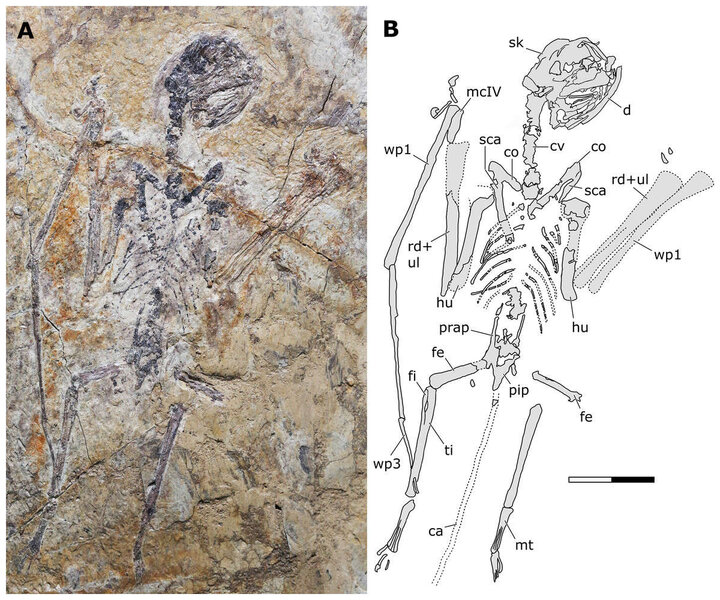Create a free profile to get unlimited access to exclusive videos, sweepstakes, and more!
If Porgs had wings they might look like this prehistoric pterosaur species

Whether you look at acclaimed paleoartist Zhao Chuang's dramatic rendering of a new species of flying reptile and see a funny-looking batfrog or one of Ahch-To's adorable avian Porgs from 2017's Star Wars: The Last Jedi, there's no doubt this recently discovered extinct animal is something of a conversation starter.
Although the traditional image of a pterosaur includes a long pointed head and beak, there are actually lesser-known groups of these famed flying reptiles called Anurognathids which are much small than the classic winged giants and could possibly be forest-dwellers living amid the trees.
A new paper recently published in the journal Paleontology and Evolutionary Science by a crew of international scientists describes an entirely new genus and species unearthed from the Middle-Late Jurassic Tiaojishan Formation in the Hebei province that is only the third species of these diminutive (and kinda cute) pterosaurs from the Jurassic of China.
Officially named Sinomacrops bondei, this fossilized specimen marks the first anurognathid ever discovered with its full skull exposed in lateral view. Following an evoloutionary development analysis of the remains, scientists involved with the study identified the 160 million-year-old Sinomacrops as a sister-group of the pterosaur known as Batrachognathus volans, which together form the whole Batrachognathinae genus.
"This paleoart illustration shows what we know about the newly discovered Sinomacrops, of the Batrachognathinae subfamily," artist Zhao Chuang tells SYFY WIRE. "Compared to other members of this subfamily, Sinomacrops was more round and streamlined. This illustration presents two of them, one flying with fully-extended wings, and another standing on the ground, to show fully its anatomy and characteristics."
Batrachoganthus was first studied back in 1948 by Soviet paleontologist Anatoly Riabinin and its etymology was formed using the Greek words for “frog jaw” and the species name, volans, which is Latin for “flying.”
According to the study, these newly-identifed pint-sized pterosaurs lived from the Middle Jurassic to the Early Cretaceous and measured up to 36 inches wide in wingspan. They featured short skulls with a small preorbital region, huge eye sockets, and a thick rounded jaw structure that was wider than long. Sporting short, peg-like teeth, these ancient creatures have been categorized as aerial insectivores with superior gliding abilities.
The fertile Yanliao Biota excavation area is renowned for the quality of specimen preservation and abundance of insects and vertebrate fossils, like salamanders, feathered dinosaurs, pterosaurs and ancient mammals.
This rare species is of particular interest as it demonstrates there was perhaps far greater morphological diversity within the anurognathids than paleontologists first believed. The new specimen is currently housed in China's Jinzhou Museum of Paleontology.
Its official name is derived by combining the Ancient Greek words for China, "Sino," and large eyes/face, "macro" and "ops." Bondei honors paleontologist and artist Niels Bonde who has been an inspiration to the researchers.
“Some previous interpretations of anurognathid morphology and systematics have relied on limited available information,” explained the study authors. “With time and new specimens being discovered, new data have been provided and new interpretations were presented. For this reason, each new specimen is crucial for the understanding of the group.”




























